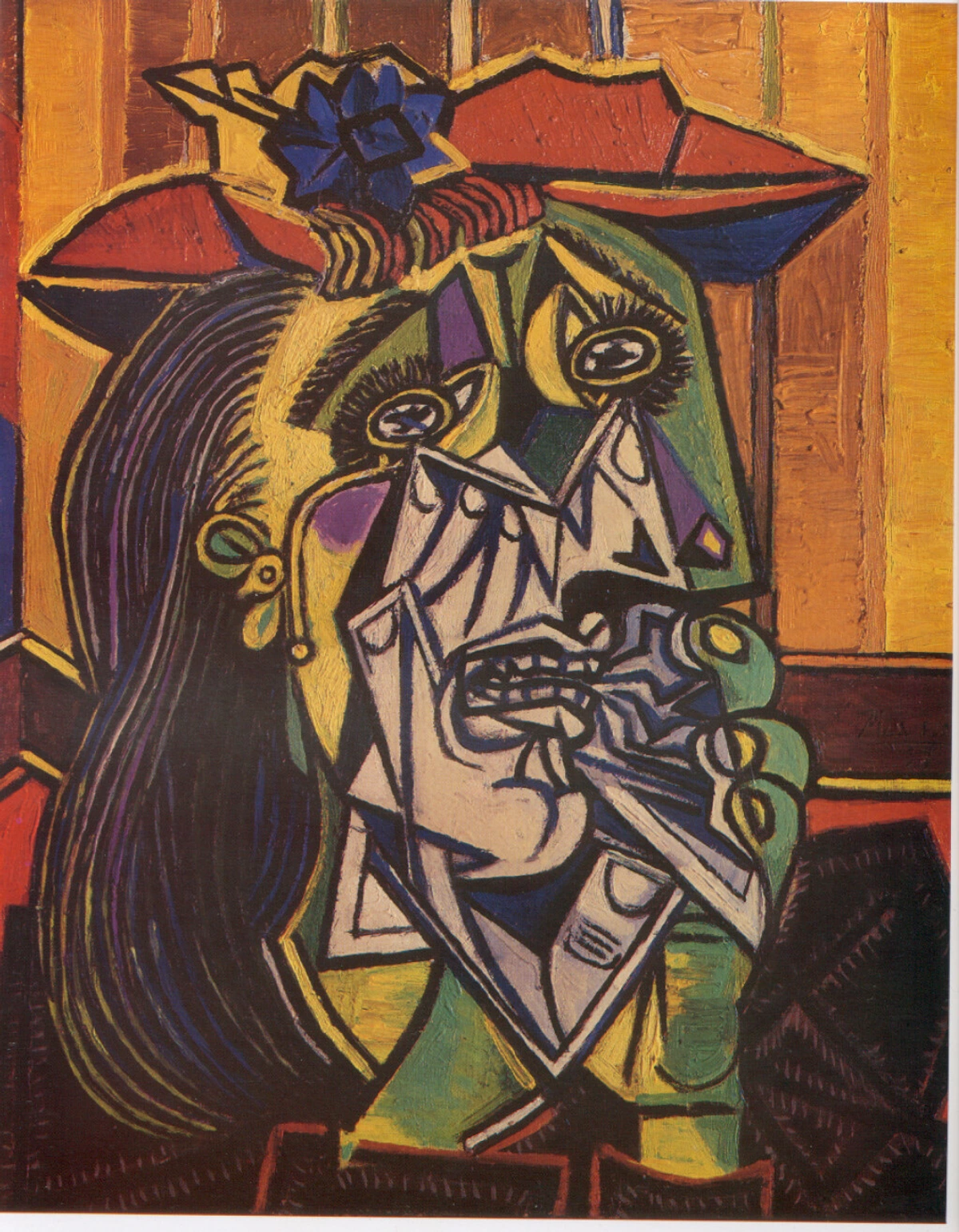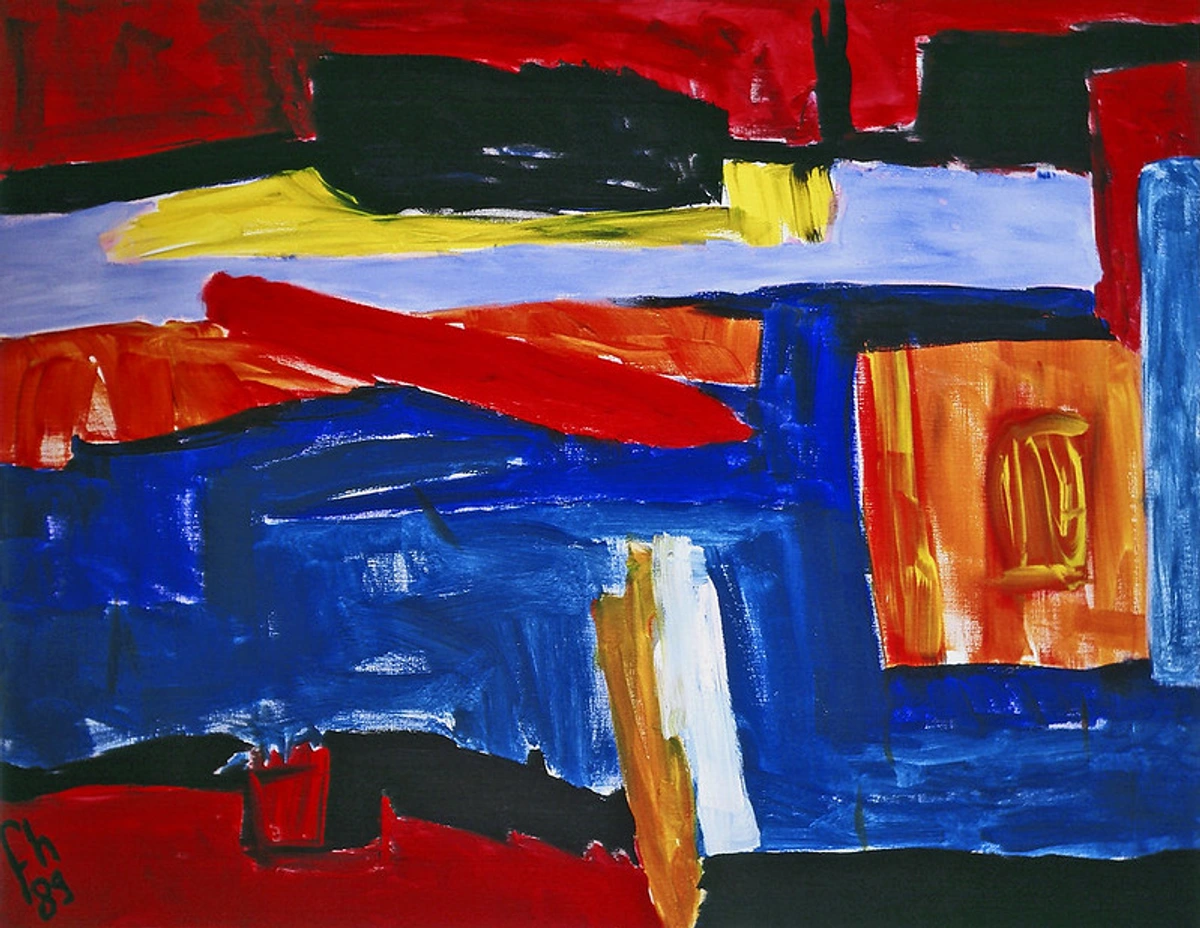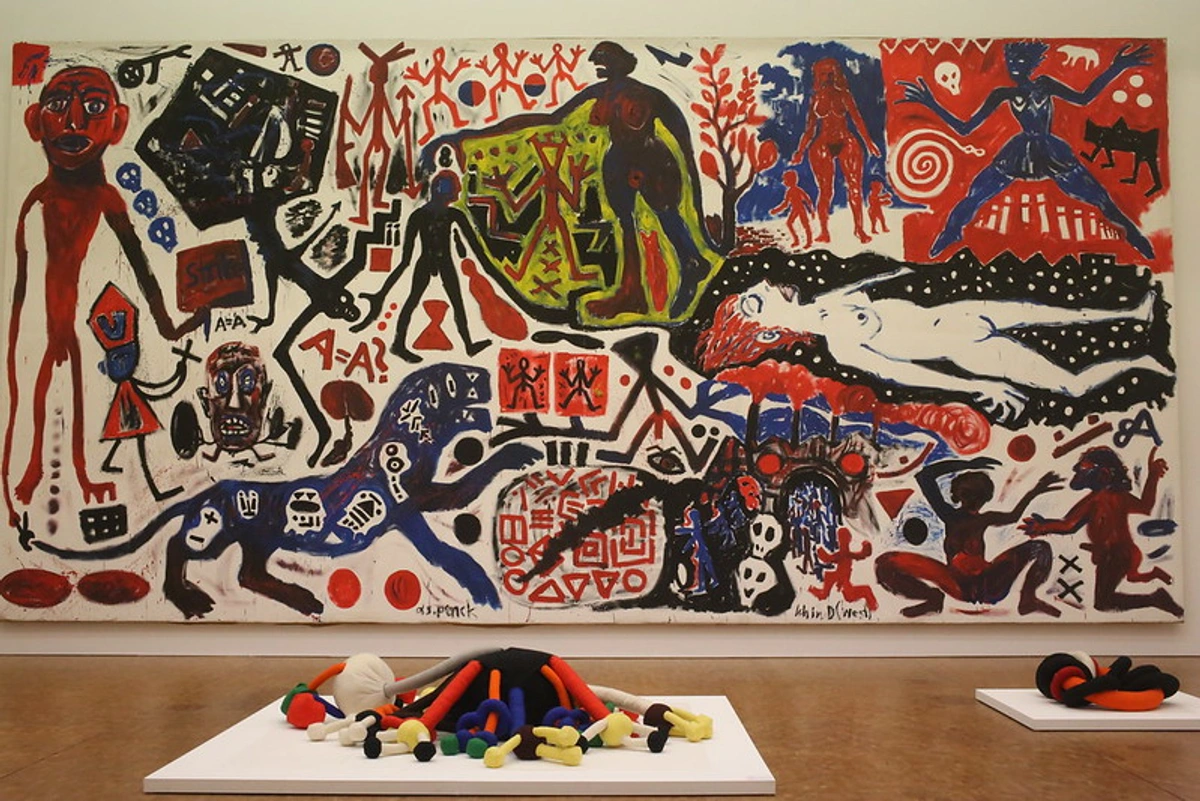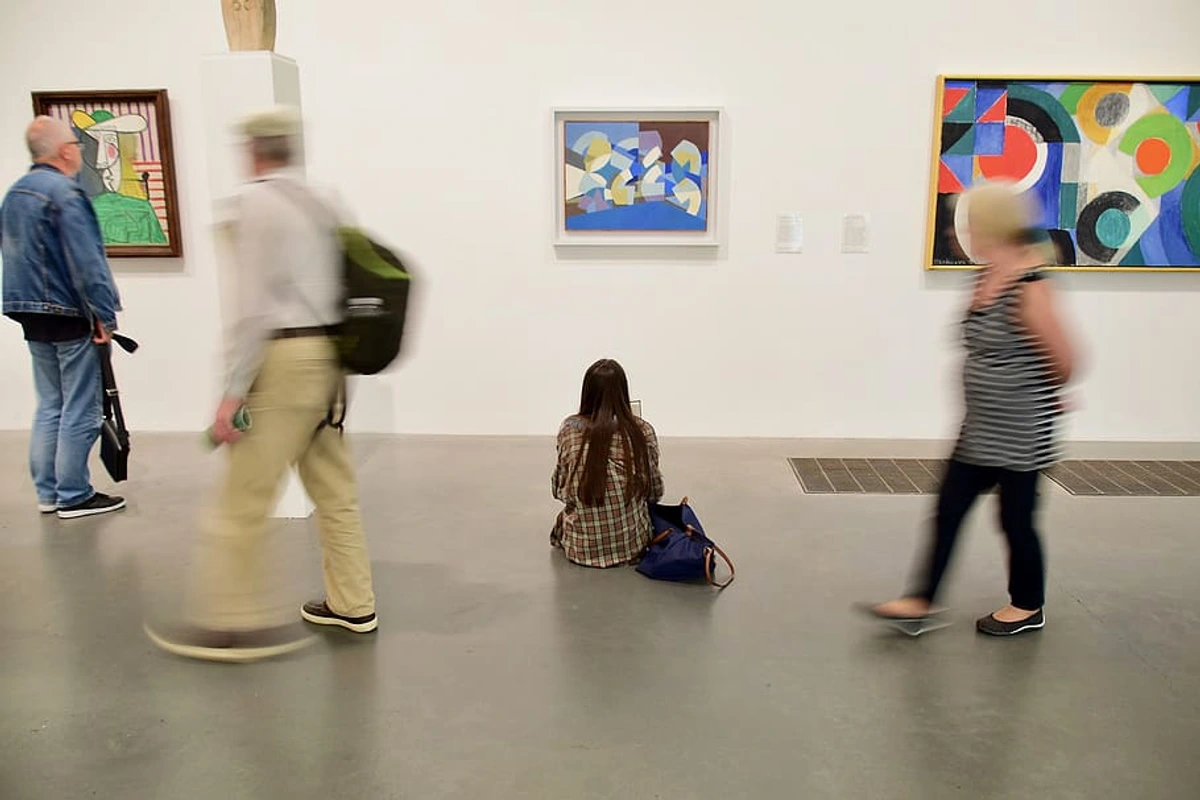
When Did Contemporary Art Start? The (Gloriously Fuzzy) Artist's Guide
When did Contemporary Art truly begin? Explore the fuzzy timeline, the shift from Modernism, key movements, and why the exact date matters less than the art itself, from an artist's perspective.
When Did Contemporary Art Actually Start? (And Why It's Gloriously Fuzzy)
Okay, let's talk about labels. As an artist, I've spent a lot of time wrestling with them – trying to figure out where my own work fits, or how to talk about the pieces that stop me in my tracks. We love labels, we need them, but sometimes they're like trying to catch smoke. When did 'Contemporary Art' begin? It feels like asking when I really became an artist, or when you really became 'you'. Ask ten different art folks – historians, curators, artists, that person who confidently misidentifies a Monet – and you might get ten different answers. It’s a bit like asking when adolescence really starts; there are signs, shifts, awkward phases, but a single universal birthday? Not so much.
Pinning down the exact moment Contemporary Art kicked off is surprisingly tricky. It's not like someone flipped a switch on January 1st, 1970, and declared, 'Modernism is over, folks! Bring on the contemporary!' (Though, wouldn't that have made art history simpler? Maybe too simple. We art types love a bit of ambiguity, don't we? It keeps things interesting, like trying to decipher the meaning in a particularly challenging piece.)
So, instead of a neat date, let's explore the why and when-ish of it all. Think of this less as a definitive answer and more as navigating the fascinating, slightly messy transition that defines the art of our time. It's a journey I'm still on myself, trying to understand the currents that shape the work I make and the work I admire.
What Isn't Contemporary Art? (Let's Clear Up the Confusion)
Before we dive into what is contemporary, it helps to understand what it followed. The big predecessor is Modern Art. This isn't just 'old art'; it refers to a specific period, roughly from the 1860s to the 1960s/70s. Think of movements that broke from tradition, obsessed with new ways of seeing and representing the world, often focusing on formal innovation and the artist's unique vision.

Here are some key movements and ideas associated with Modern Art:
- Key Modern Movements: Impressionism, Fauvism, Cubism (hello, Picasso!), Expressionism, Surrealism, and ending with giants like Abstract Expressionism.
- Core Ideas: Often focused on originality, the artist's unique vision, formal innovation (how it looked), and a sense of progression or breaking new ground.
You can get a deeper dive into what Modern Art is here or explore Modern artists.
So, if Modern Art is the revolution that broke from academic tradition, Contemporary Art is the era that came after that revolution settled, often reacting against, commenting on, or radically departing from those very Modernist ideas. It's the art that feels distinctly now, even if 'now' started a few decades ago.

So, When Did Contemporary Art Begin? The Usual Suspects
Alright, the moment of truth... sort of. Here are the most common starting points argued by art historians and institutions. It's where the lines get blurry, and the debates get interesting.
Argument 1: The 1960s / 1970s - The Big Shift
This is perhaps the most popular candidate for the birth of contemporary art. Why this era? Because the world itself was shifting dramatically, and artists, being the sensitive antennae of society, responded in kind. This period saw a flurry of movements that felt fundamentally different from Abstract Expressionism (often seen as the last bastion of high Modernism). The social upheaval of the civil rights movement, the Vietnam War, the rise of counter-culture, and the dawn of new technologies like video all contributed to artists questioning traditional forms and subjects.
Here are some of the groundbreaking movements that emerged:
- Pop Art: Artists like Andy Warhol embraced mass culture, celebrity, and consumerism. Suddenly, soup cans and movie stars were fine art. It challenged Modernism's high-minded seriousness and focus on the artist's inner world by looking outward at the shared cultural landscape.
- Conceptual Art: The idea behind the artwork became more important than the physical object itself. Think Sol LeWitt's instructions for wall drawings or Joseph Kosuth's 'One and Three Chairs'. This was a radical departure, suggesting that art could exist purely as thought or instruction.
- Minimalism: Stripped-down geometric forms, industrial materials, focusing on the viewer's experience in the space. Donald Judd's boxes are a classic example. It pushed back against the expressive gestures of Abstract Expressionism, seeking purity and objectivity.
- Performance Art: The artist's body became the medium. Actions, gestures, endurance feats – think Marina Abramović pushing boundaries. This ephemeral, often confrontational form completely bypassed traditional art objects.
- Land Art: Artists moved out of the gallery and into the landscape (Robert Smithson's 'Spiral Jetty'). This monumental, site-specific work challenged notions of ownership, display, and the very definition of what art is.
This period marked a decisive break from the focus on painting and sculpture as the primary 'serious' art forms and questioned the very definition of art itself. It was a time of radical experimentation, mirroring the radical changes happening outside the studio walls.
![]()
Argument 2: The Late 1980s / 1990s - Postmodernism & Globalization
Some argue the real contemporary era began later, suggesting the shifts of the 60s and 70s were more of a transition out of Modernism than the start of something entirely new. This perspective sees the late 80s and 90s as the true dawn of the contemporary, fueled by a confluence of factors.
Key developments of this period include:
- Postmodernism: This is a big, often confusing term! Think of it as a reaction against Modernism's belief in progress, universal truths, and the idea of a single, correct way of seeing the world. Postmodern art embraces irony, pastiche (mixing styles), questioning originality (think Richard Prince's appropriation – taking existing images and re-presenting them as his own), and deconstruction. It's like saying, "Okay, Modernism tried to build a new, perfect house, but maybe there's no such thing as perfect, and maybe we should just play around with the rubble and see what happens."
- End of the Cold War (1989/1991): This geopolitical shift led to increased globalization, cultural exchange, and a focus on identity politics as previously marginalized voices gained prominence. The art world became less centered on New York and Western Europe, incorporating perspectives from around the globe.
- Rise of Digital Technology: The internet and digital tools started impacting art creation and distribution in profound ways, opening up entirely new mediums and possibilities.
- The YBAs (Young British Artists): Figures like Damien Hirst gained notoriety with sensational, often controversial works, marking a new kind of art market and media attention that felt distinctly different from previous eras.
This perspective sees 'contemporary' as truly beginning when the world itself felt distinctly different – more fragmented, interconnected, skeptical of grand narratives, and technologically driven.
Argument 3: 'Art of Our Time' - The Rolling Definition
This is the simplest, most literal definition: Contemporary Art is the art being made now, by artists living today. It's a constantly shifting target. What's contemporary today won't be in 50 years. This definition is practical for museums and galleries collecting current work, but less helpful for art historians trying to define a specific historical period. It highlights the inherent 'fuzziness' of the term – it's both a historical label and a description of the present moment.
Why Is the Starting Point So Debated?
Why can't art historians just pick a date and stick to it? (Trust me, they love a good argument!) It’s like arguing about when your favorite band really peaked. Was it the groundbreaking second album or the stadium-filling fourth? Reasons for the fuzziness include:
- Art History Isn't Neat: Movements overlap, influence each other, and fade gradually. There are rarely clean breaks. It's more like a constantly evolving conversation than a series of distinct, sealed-off rooms.
- 'Contemporary' Means Different Things: A curator organizing a show might use a different timeframe than a historian writing a textbook. Artists themselves might not care about the label at all – they're just making work in response to their world.
- Institutional Influence: Museums and major galleries often set the tone. MoMA in New York, for instance, traditionally ended its 'Modern' story around the 1970s, implicitly marking that as the start of something new. These decisions, while practical for institutions, shape how we think about art history.
- Hindsight is 20/20: It takes time to see the bigger picture and understand which shifts were truly pivotal. We're still living in the contemporary era, which makes it hard to see its boundaries clearly.
Honestly, getting bogged down in finding the exact date feels a bit like missing the forest for the trees. Or maybe missing the messy, fascinating studio for the neatly labeled paint tube. It's the change that's interesting – the shift in mindset, materials, and message.
Key Characteristics of Contemporary Art (That Hint at its Origins)
Regardless of the start date, contemporary art often shares characteristics that distinguish it from Modernism. These traits reflect the changing world and the new questions artists are asking.
- Radical Diversity: There's no single dominant style. Painting, sculpture, video, installation, digital art, performance, social practice – anything goes. Artists use whatever medium best serves their idea. For example, you might see a traditional painting hanging next to a video installation or a piece of social practice art that involves community participation. Check out the sheer range of art styles and types of artwork being used today.
- Concept is King (Often): The idea, message, or conceptual framework can be just as, if not more, important than the aesthetic appeal or technical skill. Meaning takes center stage. Think of a piece that might look simple – maybe just a list of instructions or a found object – but the power comes from the thought process and statement behind it. For instance, an artist might display a pile of bricks, and the art isn't the bricks themselves, but the artist's statement about labor, value, and architecture that gives the piece its meaning.
- Social & Political Commentary: Much contemporary art engages directly with social justice, environmental concerns, identity politics, and current events. Artists use their work to provoke thought, challenge norms, and reflect the complexities of the modern world.
- Blurring Boundaries: The lines between 'high' art and popular culture, craft and fine art, art and life, are often intentionally blurred. Street art moves into galleries, everyday objects become sculptures, and performances happen outside traditional venues.
- Viewer Interaction: Installation and interactive works often demand the viewer's participation to complete the piece. The audience is no longer just a passive observer but an active participant in the art experience.

Does the Exact Date Even Matter?
Here's a thought, and one I often come back to when I'm in my studio, covered in paint: maybe the precise starting gun isn't the point. Does knowing the exact day you felt 'grown-up' change the fact that you did grow up? Probably not. Life, like art, is usually a messy, fluid process of evolution, not a series of perfectly defined chapters on a personal timeline.
What matters more is understanding the shift – the move away from Modernist certainty towards the questioning, diverse, and often challenging landscape of contemporary art. It’s about recognizing the different questions artists started asking, the new tools they began using, and the changing world they were responding to. For me, as an artist, it's about feeling connected to that ongoing conversation, understanding the context for why I choose certain colors or forms, or why a particular idea feels urgent now. It's about the impact the art has, the experience it creates, and the dialogue it sparks – something you can explore when looking at art. The label is just a convenient shorthand, not the essence of the work itself.
FAQ: Untangling Contemporary Art's Timeline
Q: Is Modern Art the same as Contemporary Art?
A: Nope! Modern Art generally refers to the period from the 1860s to the 1960s/70s. Contemporary Art is what came after that, continuing to the present day. They have different characteristics and concerns.
Q: What came before Contemporary Art?
A: Modern Art was the immediate predecessor. Before that, you have the long and rich history of art spanning centuries (Renaissance, Baroque, Romanticism, etc.).
Q: Who are some key early Contemporary artists (depending on the start date)?
A: If you start in the 60s/70s: Andy Warhol, Roy Lichtenstein, Donald Judd, Sol LeWitt, Joseph Beuys, Marina Abramović. If you lean later: Cindy Sherman, Jeff Koons, Damien Hirst, Jean-Michel Basquiat, Barbara Kruger, Richard Prince.
Q: Is Postmodernism Contemporary Art?
A: Postmodernism is often considered a major part or phase of Contemporary Art, particularly prominent from the 1970s through the 1990s (and its influence continues). So, yes, it falls under the contemporary umbrella.
Q: Does 'contemporary' just mean 'art made now'?
A: This is where the fuzziness comes in! While 'contemporary' literally means 'of our time,' art historians and institutions also use it to denote a specific historical period that followed Modernism, roughly from the mid-to-late 20th century onwards. So, it's both a description of current art and a historical label for the art of the recent past and present.
Q: When will Contemporary Art end?
A: Technically, it ends when historians look back and decide a significant shift has occurred, defining a new period. Until then, 'Contemporary Art' simply means 'the art of our time'. Who knows what they'll call our era in 100 years? Maybe the 'Digital Deluge' period, or the 'Post-Everything' age!
Conclusion: Embracing the 'Now' of Art
So, when did Contemporary Art start? The most honest answer is: it depends who you ask, but generally somewhere between the 1960s and 1990s. It's a period defined less by a single date and more by a fundamental shift in how artists thought about making art and its place in the world.
The exact year is less important than understanding that 'Contemporary' signifies a departure from Modernism and embraces the diverse, globalized, and often conceptually driven art of the world we live in now. It's art that reflects our complexities, our questions, and our ever-changing reality.
Instead of getting hung up on the label, the real joy is in exploring the incredible variety of famous contemporary art and discovering the best contemporary artists shaping our visual world today. It's happening all around us, in galleries, museums, online, and on the streets. Go explore it! As an artist working today, I feel like I'm part of this vibrant, ongoing story, constantly reacting to the world and the art that came before. It's a thrilling, sometimes bewildering, place to be, and you might even find something vibrant and compelling, perhaps even something to take home.





